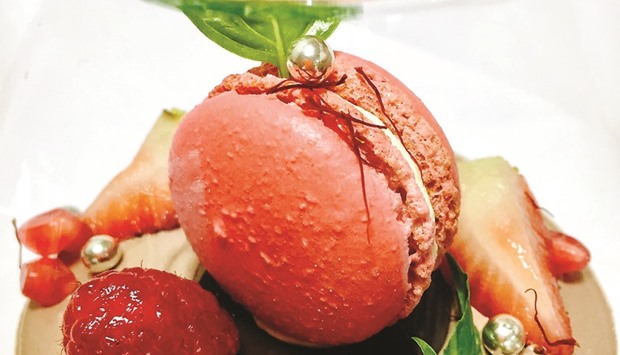The origin story of macaron is still not clear, some call it French in origin and some argue it comes from Italy. Two very common stories as per my favourite reference book Larousse gastronomique states that macaron was created in the year 1791 in a convent near in France, and also mentions that Italian Chefs of Catherine de Medici took the recipe from Italy to France when she got married to the duke of Orleans, France in 1533.
However like many other good things, macaroons did not become instantly popular and it wasn’t until 1900s that Chef Pierre of Café Laduree decided to take two macaron cookies and filled ganache between them, sticking them to teach other to be served as a pair.
Even today, Laduree continues to be one of my preferred spot for traditional macarons and other such classical items. In recent times, I would say macarons were popularised by a New York Restaurant where the macaron were sold in gift boxes of different sizes and many flavours. Later on it was found that no one else was selling it on their own and French restaurants used macarons as ornaments to decorate their cakes and desserts or serve them as petit fours.
In the last couple of years I have observed a multi fold increase in the popularity of this humble dessert and people have developed a taste for this dish. You can undoubtedly call macarons as the new cupcakes, in vogue and very much trending now days. You can get an idea about the popularity of this dish considering that it has already made it to a McDonald’s menu. You can also spot macarons in most dessert buffets, which are quite popular among locals and expats.
Raspberry Macaron
Ingredients
For cookies
Icing sugar 1 cup
Almond powder ½ cup
Egg whites 2 no
Kosher salt a pinch
Granulated sugar 2 tbsp
Almond extracts ¼ tsp
Neon food colour 3-5 drops
For ganache
Milk chocolate 50 gm
Unsalted butter 1 tbsp
Cooking cream 1 tbsp
Vanilla extracts few drops
Method
For the cookies, preheat the oven at 160 degree Celsius and line a baking tray with butter paper.
Sift icing sugar and almond powder and keep aside.
Whisk egg white and salt until frothy and light, gradually add the granulated sugar and continue to whisk until the sugar is dissolved.
Add the almond extract and the food colour to the mixture.
Gradually add 1/3rd of the sugar and almond mixture to the above mixture and blend until combined.
Add the remaining mixture also, the batter needs to be fluid and not too runny.
When you lift the batter with spatula and let it fall in the mixture the batter should form a dollop for few seconds and then mix with the batter.
Transfer the batter to the piping bag; squeeze until the batter forms a circle on the butter paper lined tray.
Gently flatten using damp fingertip if the cookie is not flat.
Bake in the oven until the macarons are crisp on top and the bottom leaves the butter paper; remove from tray and allow them to cool down.
For the ganache, combine chopped chocolate and butter in a bowl and keep it on boiling water to melt.
Once the chocolate and butter are combined well, stir in cream and then remove from heat.
Set aside to cool down and stir occasionally.
To assemble the cookies, spread a thin layer of prepared chocolate ganache and top with second cookie, press gently to spread the ganache till the rim of cookie.
Allow the cookie filling to set, store them in air tight containers and use as required.
Note: Following the recipe accurately is very crucial in making a perfect macaron, as adding too much almond powder will make the mixture thick and the mixture won’t rise and making the mixture thin will result in flat macaroons.
l Chef Tarun Kapoor,
Culinary Mastermind, USA. He may be contacted at [email protected]



